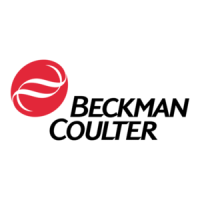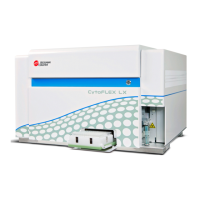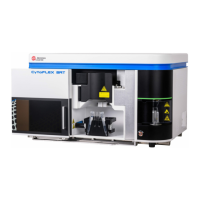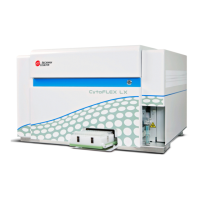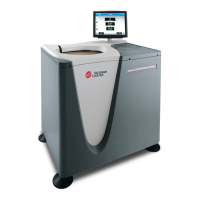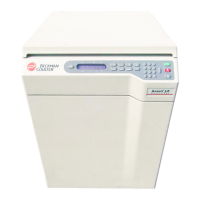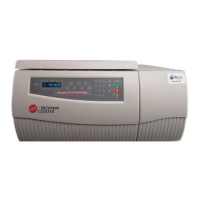PN 177196BB
7-18
DATA MANAGEMENT AND REVIEW
DATA ANALYSIS REVIEW - WBC PARAMETERS
Table 7.5 WBC Differential Parameter Characteristics
NORMAL PARAMETERS PARAMETER CHARACTERISTICS
Neutrophils r Neutrophils, with their cytoplasmic granules and segmented nuclei, scatter light
according to their morphological complexity
r Hypersegmented neutrophil gives an increased optical response when compared to a
young neutrophil population
r Higher the complexity of the cell, the further to the right they appear in the DiffPlot
Lymphocytes r Lymphocytes, typically being small with regular shape are smaller in volume and lower
in absorbance than the other cells, and are positioned in the lower region of the DiffPlot
r Normal lymphocyte populations typically have a homogeneous volume with a
Gaussian (bell-shaped) distribution
r Large lymphocytes, reactive lymphoid forms, stimulated lymphocytes and plasma cells
are found in the upper portion of the lymphocyte region
r Lower area of the lymphocyte zone is normally empty; however, when small
lymphocytes are present, a population may exist in this area
r Presence of platelet aggregates is indicated by a distribution pattern that moves from
the DiffPlot origin into the lymphocyte region
r NRBC cytoplasmic membranes lyse like those of mature erythrocytes; small nuclei that
remain appear in the debris and small lymphocyte regions
Monocytes r Monocytes are typically large cells with a kidney-shaped nucleus and agranular
(granule-free) cytoplasm
r Cells neither scatter nor absorb large amounts of light and, therefore, are positioned in
the lower end of the absorbance axis
r Due to their size, monocytes are clearly positioned high on the volume axis
r Very large monocytes may be found in the IMM (immature cell) region
Eosinophils r With reagent action, eosinophils are the most intensely stained cells for optical
separation
r Due to the staining and their size, eosinophils show higher absorbance than
neutrophils, but will be of similar volume
Debris r Platelets and debris from erythrocyte lysis represent the background debris population
located in the lower region of the DiffPlot
ABNORMAL PARAMETERS PARAMETER CHARACTERISTICS
Immature Granulocytes r Immature granulocytes are detected by their larger volume and by presence of granules
that increase the intensity of scattered light
r Due to their increased volume and similar absorbance, promyelocytes, myelocytes, and
metamyelocytes are located above the neutrophil population and are typically counted
as IMM cells; IMM cells are included in the reported neutrophil value
Band Cells r Band cells are typically larger or of similar size to the neutrophils; however, due to their
low level of cellular complexity, they absorb less light
r Band cells tend to appear in the region between the neutrophils and the monocytes
Blast Cells r Blast cells are generally larger than monocytes and have similar absorbance
r When blast cells are present, generally located above the monocytes, which means
they will be included in the IMM cell count
r Small blasts will be located between the normal lymphocyte and monocyte populations
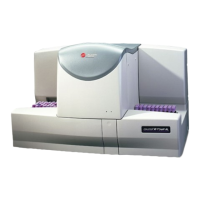
